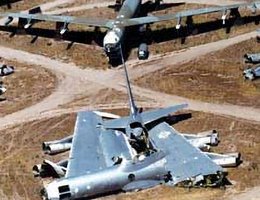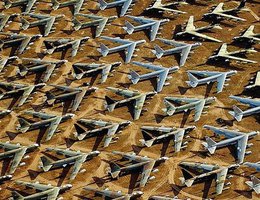

In 1992, Offutt Air Base faced massive changes. Tensions around the world quieted down, and it was a good time for the United States to reorganize its Air Force. After 46 years, SAC was deactivated on June 1, 1992. A new, united command, STRATCOM was activated. STRATCOM controlled the U.S. nuclear arsenal in case of another war. Offutt’s 55th Air Wing flew reconnaissance (observation) missions throughout the world. At the end of the 20th century, the 55th remained the largest wing in the U.S. Air Combat Command. STRATCOM had the responsibility for controlling all of the nuclear weapons that were available to the U.S. Air Force and Navy around the world.
In fact, all of STRATCOM became a joint operation with personnel from all four services — Air Force, Navy, Army, and Marines. Yet, the mission remained the same. Their purpose was to prevent a military attack on the United States and its allies. If this wasn’t possible, they would use their forces to do what was necessary.


When STRATCOM began, the Looking Glass flights became a joint Air Force and Navy operation. Personnel from both services provided round-the-clock, survivable, alternate command of strategic forces during national emergencies.
In fact, all of STRATCOM became a joint operation with personnel from all four services — Air Force, Navy, Army, and Marines. Yet, for all the changes, the mission remained the same — to deter a military attack on the United States and its allies, and should deterrence fail, employ forces so as to achieve national objectives.
Other responsibilities included: